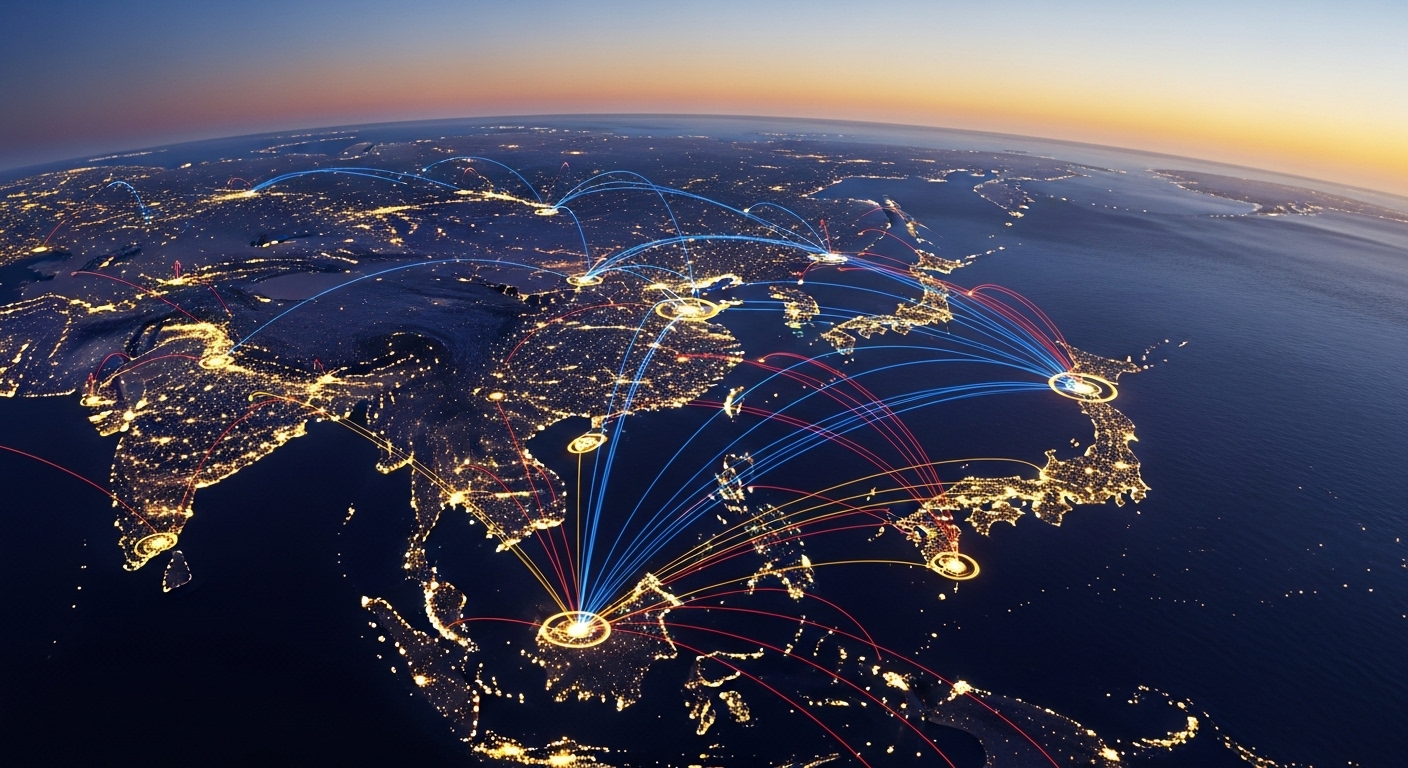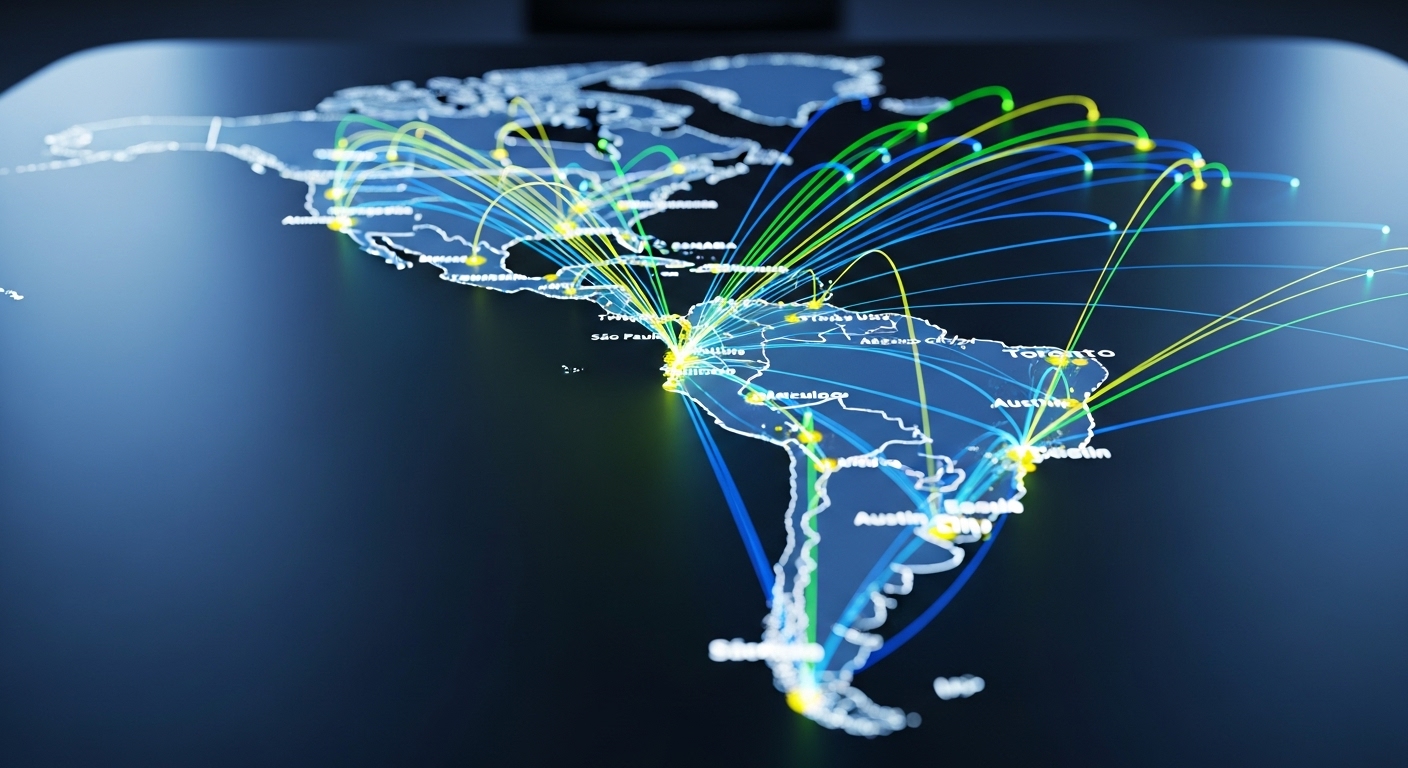The traditional view of the Asia-Pacific business landscape often resembles a static map of disconnected dots—major hubs like Tokyo, Singapore, and Hong Kong evaluated in isolation. This perspective is increasingly obsolete. In today’s hyper-connected world, the region’s true power lies not within these individual cities, but in the dynamic flows between them. These are the new economic arteries: intricate, pulsating networks of capital, data, goods, and talent that form a cohesive and resilient regional ecosystem. Driven by accelerated digitalization, strategic shifts in global supply chains, and a growing emphasis on regional integration, understanding these flows is now paramount for any business looking to thrive. This analysis moves beyond simple rankings to trace these critical connections, exploring how the digital backbone, investment currents, and reimagined logistics pathways are defining the future of commerce across the Asia-Pacific. We will delve into the data highways, capital gateways, and talent migrations that are forging a powerful, integrated super-network, offering a more nuanced map for strategic decision-making.
The digital backbone: data flows as the new currency
The lifeblood of the modern Asia-Pacific economy is data, and its flow depends on a robust digital backbone. This infrastructure, composed of vast data centers and a web of submarine fiber-optic cables, forms the primary artery for regional commerce, communication, and innovation. Cities like Singapore and Tokyo have long been the anchor points, housing massive data center clusters that serve as critical nodes for global cloud providers and multinational corporations. However, the network is rapidly expanding. Driven by data sovereignty laws and the need for lower latency, new hubs are emerging at a breathtaking pace. Jakarta, for instance, is experiencing a data center construction boom to serve Indonesia’s massive digital population, while Kuala Lumpur is positioning itself as a cost-effective and well-connected alternative. These facilities are more than just storage; they are the engines of the digital economy, powering everything from cross-border fintech transactions to the AI algorithms that optimize regional supply chains. The investment in this digital backbone is immense, with submarine cable projects like the Apricot cable system set to link Japan, Singapore, Indonesia, and the Philippines, significantly boosting capacity and resilience. For businesses, this expanding digital network means faster access to emerging markets and the ability to deploy sophisticated, data-driven services across a wider geographical footprint, effectively erasing old commercial borders.
Capital currents: navigating investment pathways
Capital is the fuel for growth, and its currents across the Asia-Pacific are carving out new pathways for opportunity. While established financial centers remain crucial, the nature and direction of investment flows are evolving. Singapore continues to solidify its role as the premier gateway for foreign direct investment (FDI) into Southeast Asia, benefiting from its political stability, strong regulatory framework, and deep pool of financial expertise. It serves as a strategic launchpad for venture capital funds looking to tap into the region’s burgeoning startup scene. Hong Kong, despite geopolitical shifts, remains a vital conduit for capital flowing into and out of mainland China. However, the story is no longer confined to these two giants. Seoul has emerged as a powerhouse for deep-tech and content-driven investments, with its venture capital ecosystem fostering innovations in AI, biotech, and entertainment. Meanwhile, a renewed sense of stability and corporate governance reform is making Tokyo an increasingly attractive destination for institutional investors seeking reliable returns. The technology facilitating these flows is also changing. Fintech platforms and digital banking solutions are increasingly enabling seamless cross-border transactions and investments, democratizing access to capital for small and medium-sized enterprises across the region. Navigating these capital currents requires a sophisticated understanding of not just individual market strengths, but also the regulatory and technological channels that connect them.
The physical handshake: reimagining regional supply chains
Recent global disruptions have forced a fundamental reimagining of physical supply chains, shifting the focus from pure cost efficiency to resilience and diversification. This has created a powerful new set of logistical arteries across the Asia-Pacific. The “China+1” strategy is a key driver of this change, compelling companies to establish manufacturing and assembly operations in alternative locations to mitigate risk. As a result, industrial parks and logistics hubs in Vietnam, particularly around Ho Chi Minh City, are experiencing a massive influx of investment. Thailand’s Eastern Economic Corridor is similarly becoming a critical node for advanced manufacturing in sectors like automotive and electronics. These new production centers are connected to global markets through world-class port infrastructure. The Port of Singapore remains the world’s busiest transshipment hub, a critical interchange for goods moving between Asia, Europe, and the Americas. Yet, ports like Shanghai and Busan continue to innovate with automation and smart logistics to handle ever-increasing volumes. Beyond the factory and the port, the e-commerce boom has revolutionized last-mile delivery. This has spurred the development of sophisticated urban warehousing and distribution networks in cities from Bangkok to Manila, creating an entirely new layer of logistical infrastructure designed for speed and consumer proximity. This evolving physical handshake is forging a more distributed, resilient, and responsive manufacturing and logistics network across the region.
Talent migration: the human engine of the new economy
The flows of data, capital, and goods are ultimately powered by people. The movement of skilled talent across the Asia-Pacific is a critical artery that fuels innovation and drives economic growth. Governments in the region are actively competing to attract the best and brightest. Singapore’s Tech.Pass and ONE Pass programs are prime examples of policies designed to draw in experienced tech entrepreneurs, leaders, and specialists from around the world. This strategy has helped establish the city-state as a true global hub for innovation. At the same time, certain hubs have become massive cultivators of specific skills. Bangalore, for instance, remains an unparalleled center for IT and software development, with its talent pool supporting not only local operations but also global tech companies remotely. Similarly, Shenzhen has evolved into a global epicenter for hardware engineering and product development talent. The dynamic is also changing due to the normalization of remote and hybrid work. This allows a company headquartered in Sydney to leverage a development team in the Philippines and a marketing specialist in Malaysia, creating distributed, cross-border teams connected through the digital backbone. This talent mobility, both physical and virtual, allows for a more efficient allocation of human capital, enabling companies to access specialized skills wherever they exist and fostering a more integrated and collaborative regional workforce.
The green transition: sustainable finance and energy corridors
A new and rapidly growing economic artery is being formed by the region-wide push towards sustainability. The flow of capital into green projects and the development of renewable energy corridors are reshaping the Asia-Pacific’s industrial and financial landscape. This transition is driven by a combination of regulatory pressure, investor demand, and corporate responsibility. Singapore is aggressively positioning itself as Asia’s leading hub for green finance, launching initiatives and frameworks to channel capital towards sustainable investments across Southeast Asia. This funding is critical for large-scale projects, such as developing geothermal power in Indonesia or building vast solar farms in Australia. These projects, in turn, are creating new energy corridors. For example, the Sun Cable project aims to transmit solar power from Australia to Singapore via a high-voltage undersea cable, representing a literal new artery for clean energy. This green transition also extends to supply chains. Multinational corporations are increasingly demanding that their suppliers adhere to strict environmental, social, and governance (ESG) standards. This is compelling manufacturing hubs in Vietnam and Thailand to invest in greener production methods and circular economy principles, creating a demand for green technology and sustainable logistics services. The flow of sustainable finance and clean energy is not just an environmental imperative; it is a significant economic opportunity that is forging new connections and dependencies across the region.
Urban synergy: how interconnected hubs create a regional super-network
The true power of Asia-Pacific’s new economy emerges when these distinct arteries—digital, capital, logistics, talent, and green energy—are viewed not in isolation, but as an integrated super-network. The synergy between these flows creates a whole that is far greater than the sum of its parts, enhancing regional resilience and accelerating innovation. Consider a modern technology product: its software could be developed by a team in Bangalore, funded by venture capital from Singapore, built with components engineered in Shenzhen, assembled in a smart factory in Vietnam, and hosted on cloud servers in Jakarta. This complex interplay is orchestrated through the region’s digital backbone and financed by its sophisticated capital markets. This network effect means that a disruption in one area can be rerouted through another, increasing overall resilience. It also fosters a unique environment for innovation, where ideas and expertise can flow freely across borders. A fintech startup in Seoul can easily access the vast consumer market in Indonesia, while a sustainable agriculture firm in Malaysia can attract green financing from Hong Kong. This level of integration means that businesses no longer need to choose a single ‘best’ hub. Instead, the strategic challenge is to understand the strengths of each node in the network and leverage the flows between them to build an agile, distributed, and future-proof operational footprint across the entire Asia-Pacific region.
In conclusion, the Asia-Pacific can no longer be seen as a collection of standalone economic centers. It has evolved into a deeply integrated super-network, defined by the constant and strengthening flow of its economic arteries. We’ve traced the critical pathways of data that form the digital backbone, the capital currents that fund growth, the reimagined supply chains that move physical goods, the migration of talent that powers innovation, and the nascent green corridors that promise a sustainable future. For global leaders and strategists, the key takeaway is that success in the region depends on network thinking. It requires looking beyond the city skyline and understanding the intricate connections that bind the region together. The most successful strategies will not be about planting a flag in a single location, but about skillfully tapping into these multiple, interconnected flows. The future of commerce in the Asia-Pacific lies not within the static dots on the map, but in the vibrant, pulsating arteries that connect them into the world’s most dynamic economic ecosystem.





